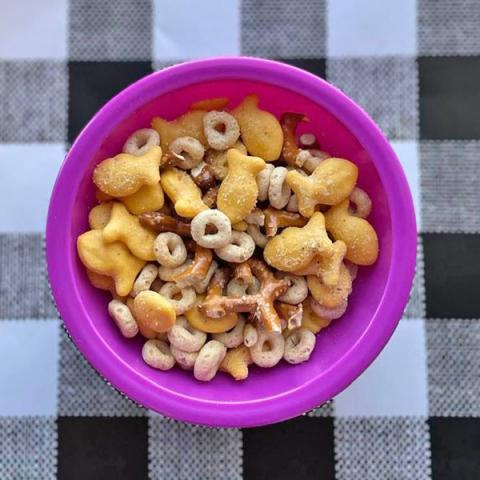
A well-balanced diet rich in fiber is an important part of healthy living. Fiber is found in many of the plants we eat such as fruits, vegetables, whole grains, and nuts. Fiber helps to regulate bowel movements, makes us feel full, lowers blood sugar and cholesterol, and may reduce the risk of getting certain types of cancer. There are two types of dietary fiber, insoluble and soluble.
- Insoluble fiber is also called “roughage” or “bulk” and does not dissolve in water. The main job of insoluble fiber is to keep your intestinal tract healthy by reducing the amount of time that food sits in your intestinal tract. If food stays in your intestinal tract too long, it can cause constipation. Food sources of insoluble fiber are wheat bran, whole grains, fruits, and vegetables.
- Soluble fiber may be helpful in removing cholesterol from the blood. Lowering cholesterol can reduce your risk for heart disease. Food sources of soluble fiber include dried beans, peas, lentils, oats, barley, fruits, and some vegetables like carrots and squash.
How much fiber do we need each day? Aim for 25-35 grams by eating at least 3 servings of vegetables, 2 servings of fruits, and 3 servings of whole grains each day. Make sure to increase fiber gradually and drink plenty of fluids.
10 Ways to Add Fiber to Your Diet
- Eat more legumes, such as dried beans, lentils and split peas.
- Choose romaine lettuce or spinach instead of iceberg lettuce.
- Include fruits such as berries for breakfast or snacks.
- Enjoy 100% whole-wheat or whole-grain bread.
- Choose breakfast cereals that have a whole grain listed as the first ingredient.
- Choose brown rice instead of white.
- Eat the skins on fruits and vegetables, such as apples and potatoes.
- Substitute whole grain flour for ¼ to ½ of the all-purpose flour in recipes.
- Snack on dried fruit, popcorn, whole grain crackers or fresh vegetables.
- Eat whole fruits and vegetables instead of drinking 100% juice.
High Fiber Recipes
Sources:
Adding Soluble Fiber to Lower Your Cholesterol: National Lipid Association. Accessed 7 May 2021.
Dietary Fiber: Essential for a Healthy Diet: Mayo Clinic, 6 Jan. 2021.
Shankar, S., and E. Lanza. Dietary Fiber and Cancer Prevention: PubMed, Hematol Oncol Clin North Am, 5 Feb. 1991.
This article was reviewed and updated in 2021 by Victoria Stengel, UNL Dietetic Intern.
Tags:
Feedback Form
Feedback Form
If you do not see the article, please scroll up the page.
The Nutrition Education Program (NEP) delivers evidence-based nutrition education and obesity prevention interventions through a combination of education strategies coupled with multi-level community changes that occur within the environment to promote healthy eating and active lifestyles.
This material was funded by USDA's Supplemental Nutrition Assistance Program – SNAP and Expanded Food & Nutrition Education Program (EFNEP).











